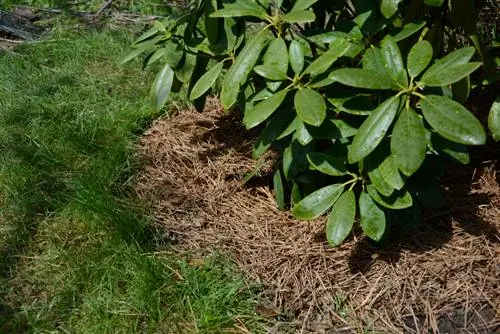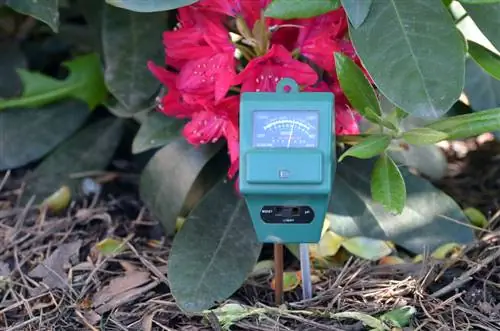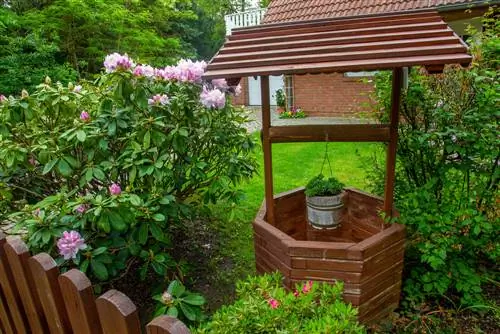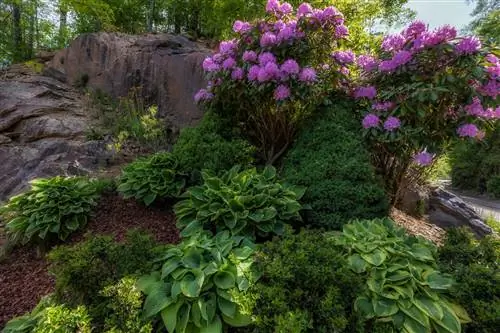- Author admin [email protected].
- Public 2023-12-16 16:46.
- Last modified 2025-01-23 11:22.
Rhododendrons have special requirements for location and care. Mulching is a measure that improves the growth of these ornamental shrubs. However, the special summer bloomers do not tolerate every mulching material, so you should choose the substrate carefully.
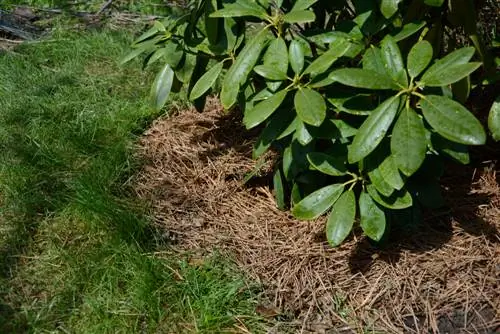
Which materials and procedure are recommended for rhododendron mulching?
When mulching rhododendrons, suitable materials such as shredded pine bark, needles, chopped autumn leaves or dried cuttings should be used. Depending on the size of the rhododendron, the mulch layer should be 5-15 cm high and should be applied in autumn or spring.
Young plants
In the first few years, rhododendrons are grateful for a layer of mulch on the ground. Apply organic material such as grass clippings, oak leaves or pine needles about three to four weeks after planting. Depending on how much mulching material you have available, you can cover the planting disc or the entire bed. The latter variant ensures a well-groomed appearance. The mulch layer should not be higher than five centimeters.
Advantages for ingrown specimens
The rhododendron is a shallow-rooted plant that gets its nutrients from the top 20 centimeters of the soil. This property makes weeding difficult because garden tools quickly damage the roots. A layer of mulch not only prevents excessive water evaporation from the soil, but also suppresses the growth of unwanted weeds.
Suitable materials
With the right substrates, a low pH value can be created in the soil, which offers the rhododendron optimal growth conditions. Mushroom manure is a popular mulching material. Due to the high pH value, it is not suitable for rhododendrons. Since nitrogen consumption is high during the decomposition of organic matter, deficiency symptoms can occur. You can prevent growth disorders by incorporating horn meal (€7.00 on Amazon) into the soil before mulching.
The rhododendron can tolerate this:
- crushed pine bark and needles
- collected and chopped autumn leaves
- dried grass clippings from mowing the lawn
- shredded twigs and branches from pruning
Apply mulch
The thickness of the mulch layer depends on the size of your rhododendron. While large specimens can tolerate a ten to 15 centimeter thick layer, the material for short-growing varieties should not be piled higher than five centimeters. If you distribute the substrate in autumn, it protects the soil from the winter sun and prevents frost damage. A layer of mulch applied in spring supports the growth of ornamental plants during the summer.
Tip
If the location is too dry and sandy, you can improve plant growth by adding rhododendron soil annually. A layer of mulch applied afterwards also serves well here.

